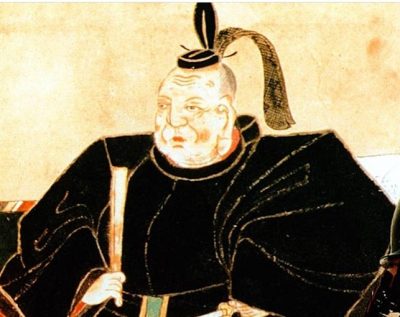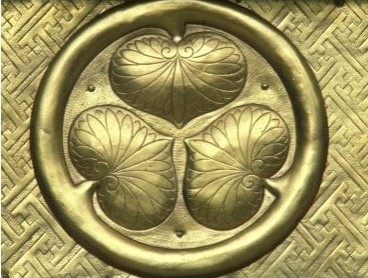The First Tokugawa Shogun : Ieyasu Tokugawa
The start of the Edo period brought great changes (Shogun system ) to Japan. It was the start of a relatively peaceful era compared to the centuries before. There was a lot of fighting between different clans and no real unity of Japan. The Tokugawa shogunate started with the Edo period and the first shogun; Ieyasu Tokugawa.
At this time, Japan entered a golden age of culture and arts. This was brought about by the way the shogunate structured information flows to and from new capital Edo, and the long period of peace. Almost entirely closed off from any foreign influences, a culture very specific to Japan started blooming.

But who was the man that started the Tokugawa family rule that presided over Japan for the entire duration of the Edo period until 1868? There was a succession of 15 shogun, of which Tokugawa Ieyasu was the first. Let us introduce this great warlord to you.
Early Life of Tokugawa Ieyasu
It was Tokugawa Ieyasu who put an end to the turbulent era of the warring states and established the Edo shogunate. Although Ieyasu was famous as a man of the land, he was kept hostage by the Oda family who played a large role in the unification of Japan. He also stayed with the Imagawa family when he was a child, and lived an unhappy life with his retainers.
He married his wife at the age of 16, and he sought independence from the Imagawa clan when he learned about their defeat. Later, Oda Nobunaga and Tokugawa Ieyasu’s troops combined strength to defeat a common enemy. It didn’t go easy as both sides tried to surprise each other and Ieyasu’s side took heavy losses. Oda and his eldest son were assassinated by his own general. This only made Ieyasu’s tasks harder. Because Oda’s unsettled retainers and peasants would now also be counted amongst his enemies.
Rival Toyotomi Hideyoshi
In the meantime, Toyotomi Hideyoshi, who also had a great hand in the unification of Japan, tried to take over Japan. Ieyasu responded by allying with the influential Hojo clan and managed to become the lord of 5 provinces. After a battle, he also made peace with Toyotomi by taking his sister as his second wife.
They fought side by side to conquer Odawara. At that time Ieyasu settled by ruling the Kanto region instead of trying to rule more of Japan. The Kanto region, however, turned out to be a great place from where to extend further influence. Ieyasu built up his hold on the region by putting trusted vassals in place in all provinces.
Eventually, after Toyotomi’s death, there were supporters of Toyotomi (west) and supporters of Ieyasu (east). At some point, they came to a head in the battle of Sekigahara that took around 6 hours. Slowly, warriors of the western side started to walk over to Ieyasu’s eastern side until the generals of the western side were defeated.
Start of the Shogunate in Edo
After winning the Battle of Sekigahara, Tokugawa Ieyasu was appointed by the Imperial Court in 1603. At that time, he because the Seii Tai shogun, and here the Edo Shogunate was born. This was a stark contrast to what Toyotomi had wanted, who maintained relations with the Imperial Court. By establishing the shogunate in Edo instead of Kyoto, Tokugawa Ieyasu intended to avoid interference from the Imperial Court.
However, Tokugawa Ieyasu himself was rarely in Edo, and spent much of his time at Fushimi Castle. He came to the capital to check Toyotomi’s side frequently. Even after becoming shogun, Tokugawa Ieyasu had to keep an eye on Toyotomi’s side to prevent them from revolting. There were still some feudal lords in the west who wanted to join Toyotomi’s side, and they needed to be weakened.
Therefore, Tokugawa Ieyasu started the construction of Edo Castle. In order not to give the feudal lords time to fight, he appointed about 70 feudal lords from the east and west. They had to work on the construction of the castle. As a part of this project, the castle town was developed and the daimyo residences were built.
Finishing the Job
In 1605, Tokugawa Ieyasu handed over the shogunate to his third son, Tokugawa Hidetada. He moved to Sunpu Castle two years later and continued to hold political control, albeit in the shadows. On the other hand, Tokugawa Ieyasu still had a lingering sorrow for the Toyotomi family. This was completely dispelled during the Osaka Winter and Summer campaigns of 1614-1615. The winter and summer campaigns of Osaka took place twice, once in winter and once in summer. Hereby, the Toyotomi family was destroyed after a fierce battle. With this, Tokugawa Ieyasu’s control of the country was complete.
After the biggest threat of the Toyotomi family was gone, Tokugawa Ieyasu continued to cut down on wastefulness as he had done since his youth. At a time when the average life expectancy was around 40 years, Tokugawa Ieyasu lived to the age of 75. It is said that Tokugawa Ieyasu was able to live a long life because he continued to live a life of health-consciousness. Eating only barley rice and miso soup and hunting falcons to get exercise, he stayed healthy.
The Tokugawa Shogun Family Crest
If you are interested in Japanese history you might be familiar with the ‘futaba afuhi’ (two-leaf hollyhock). This is the Tokugawa family crest that looks like a leaf with 3 parts. While the futaba afuhi actually has only two leaves, but the crest has three leaves. It has been used since Ieyasu Tokugawa became shogun. It is not known exactly why the Tokugawa family started to use the Aoi crest.
There are various theories such as that they exchanged it with their vassal, the Honda family, or that they got it from their vassal, the Sakai family, or another theory is that Ieyasu Tokugawa himself invented the Aoi crest. In order to give the mitsuba Aoi crest authority, the shoguns politely refused a proposal to give the imperial family the chrysanthemum and paulownia crest.
In order to emphasize that the Aoi crest was a special family crest, he forbade anyone other than those of the Tokugawa and Matsudaira families to use it unnecessarily. Two other branches of Tokugawa families, the Mito-Tokugawa family, and the Kii-Tokugawa family were also prohibited from using the same crest as the shogun’s family and were required to make a three-leaf hollyhock with the back leaves. Tokugawa Ieyasu tried to differentiate the family crest from other family crests by making it rare and to enhance its authority.
Tokugawa Shogun Family Related Spots in Tokyo
There are still many places in Tokyo that relate to the Tokugawa family. If you come on a Tokyo tour you will certainly get to see some of these places of interest. Which Tokugawa-related places should you definitely visit if you are a history buff on a trip to Tokyo?
- Ueno Toshogu Shrine: this beautiful shrine is one of the few buildings that survived the many disasters that have hit Tokyo over the years, and is conveniently located in Ueno Park.
- Kanneiji Temple: also in Ueno Park, this quiet temple contains a mausoleum for 6 of the Tokugawa shogun. You can’t reach the mausoleum itself, but the temple is open to the public and beautiful. The shogunal grave you can get closest to is located in the nearby Yanaka graveyard, this is the grave of the very last shogun Tokugawa Yoshinobu. It is quite easy to recognize as it is surrounded by a fence decorated with the Tokugawa family crest.
- Hamarikyu Gardens: built by the brother of the 5th Tokugawa shogun, this impressive Japanese landscape garden was owned by the Tokugawa family until the end of the Edo period, which is when the gardens went to the Imperial Family. It was mainly used as a place to go duck hunting and to receive important guests.
Your Japan Tour
As seasoned Japan experts, we can help you create your perfect Japan tour including guides who are true cultural experts and can tell you all about historical figures like Tokugawa Ieyasu. Contact us to start planning your unforgettable holiday to this fascinating country. Japan is full of once-in-a-lifetime experiences, culture, history, nature, and delicious food!

